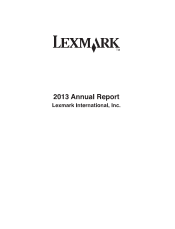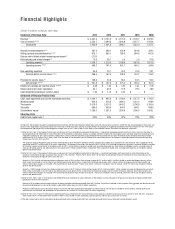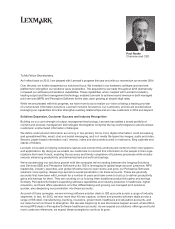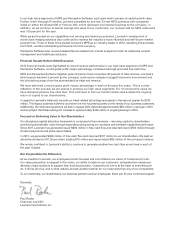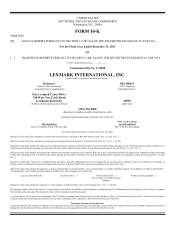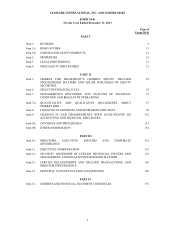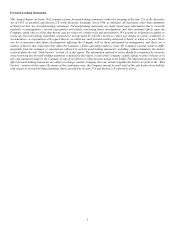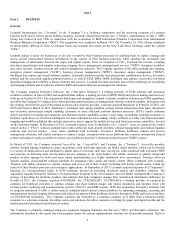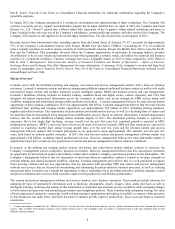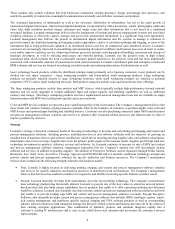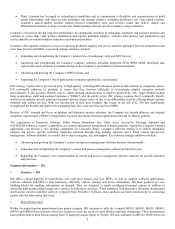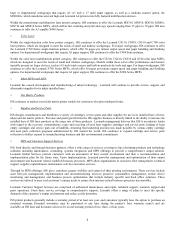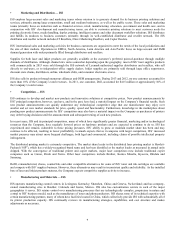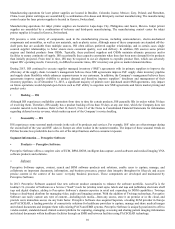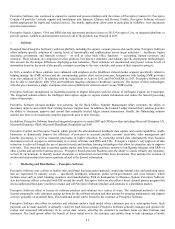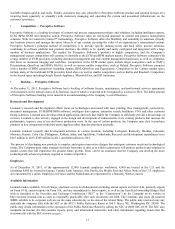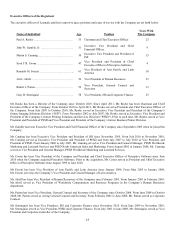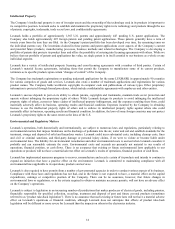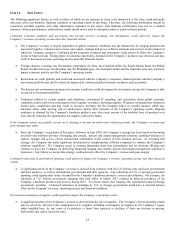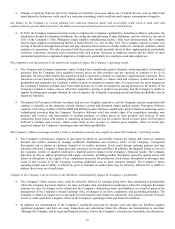Lexmark 2013 Annual Report Download - page 10
Download and view the complete annual report
Please find page 10 of the 2013 Lexmark annual report below. You can navigate through the pages in the report by either clicking on the pages listed below, or by using the keyword search tool below to find specific information within the annual report.
6
These markets also include solutions that help businesses understand existing processes, design and manage new processes, and
enable the assembly of content into meaningful communications internally and with their customers and partners.
The continued digitization of information as well as the electronic distribution of information, has led to the rapid growth of
unstructured digital information. Unstructured digital information is represented by office documents, emails, photographs, audio and
video files, high resolution medical images, document and image scans and other information that is not stored in a traditional
structured database. Lexmark management believes that the deployment of content and process management systems and associated
workflow solutions to effectively capture, manage and access this unstructured information is a significant long term opportunity.
Lexmark management also believes the growth in unstructured digital information and the systems to manage it continues to
positively impact the distributed printing and imaging market opportunity relative to centralized printing and imaging, as more of the
information that is being printed and captured is on distributed devices and less on commercial and centralized devices. Lexmark’s
customers are increasingly interested in streamlining and automating document workflows and business processes in order to reduce
costs and/or improve customer service. Improving business processes includes reducing physical handling, movement and storage of
hardcopy documents, as well as reducing unnecessary and wasteful printing. Lexmark sees the greatest waste in high volume
centralized print which includes the need to physically transport printed materials to the point-of- need and has been traditionally
associated with considerable amounts of unused and wasted printed material. Lexmark’s distributed print and enterprise content and
BPM solutions and services are focused on reducing centralized print and reducing unnecessary distributed print as well.
Laser technology based products within the distributed printing market primarily serve business customers. Laser products can be
divided into two major categories — large workgroup products and lower-priced small workgroup products. Large workgroup
products are typically attached directly to large workgroup networks, while small workgroup products are attached to personal
computers (“PCs”) and/or small workgroup networks. Both product categories include color and monochrome laser offerings.
The large workgroup products include laser printers and MFP devices, which typically include high-performance internal network
adapters and are easily upgraded to include additional input and output capacity and finishing capabilities as well as additional
memory and storage. Most large workgroup products also have sophisticated network management tools and are available as single
function printers and MFP devices that print/copy/fax and scan to network.
Color and MFP devices continue to represent a more significant portion of the laser market. The Company’s management believes that
these trends will continue. Industry pricing pressure is partially offset by the tendency of customers to purchase higher value color and
MFP devices and optional paper handling and finishing features. Customers are also purchasing connected smart MFPs and document
and process management software solutions and services to optimize their document-related processes and infrastructure in order to
improve productivity and cost.
Strategy
Lexmark’s strategy is based on a business model of investing in technology to develop and sell printing and imaging and content and
process management solutions, including printers, multifunction devices and software solutions with the objective of growing its
installed base of hardware devices and software installations, which drives recurring printing supplies sales and software subscription,
maintenance and services revenue. Supplies have been the primary profit engine of the business model. Supplies profit helps fund new
technology investments in products, solutions, services and software. As Lexmark continues to increase its mix of MPS and content
and process management software solutions, management anticipates that the Company’s annuity mix will increasingly include
software and services, in addition to printing supplies. The addition of Perceptive Software and its expansion through Pallas Athena,
Brainware, Isys, Nolij, Acuo, AccessVia, Twistage, Saperion and PACSGEAR add to Lexmark’s traditional technology strength and
provide content and process management solutions for specific industries and business processes. The Company’s management
believes that Lexmark has the following strengths related to this business model:
First, Lexmark is highly focused on delivering printing, imaging, and content and process management software solutions
and services for specific industries and business processes in distributed work environments. The Company’s management
believes that this focus has enabled Lexmark to be responsive and flexible in meeting specific business customer needs.
Second, Lexmark internally develops both monochrome and color laser printing technology. The Company’s monochrome
laser technology platform has historically allowed Lexmark to provide one of the best values in enterprise network printer-
based products and also build unique capabilities into its products that enable it to offer customized printing and document
workflow solutions. Lexmark also internally develops its print, content and process management software platforms and tools
that enable it to provide leading edge MPS and content and process management solutions. Lexmark, through Perceptive
Software, also internally develops content and process management software that includes DOM, intelligent capture, search,
rich content management, and healthcare specific medical imaging and VNA software products as well as corresponding
industry tailored solutions to help companies manage the lifecycle of their content and business processes all in the context of
their existing enterprise applications. This combination of platform, product, and solutions integrates rapidly into a
customer’s existing IT infrastructure and is easy to use, which drives user adoption and accelerates the customer’s process
improvements.
6

